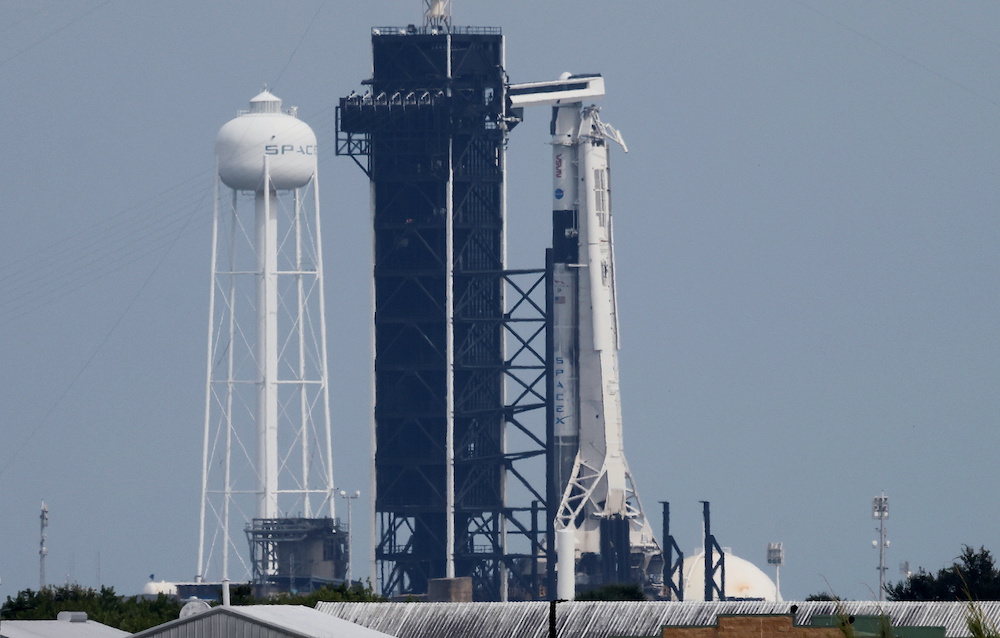A SpaceX Falcon 9 rocket stands on the launch pad as it is prepared to carry four astronauts to the International Space Station at the Kennedy Space Centre in Cape Canaveral, Florida, US, October 28, 2021. – Reuters pic
FLORIDA, Nov 9 — Four astronauts strapped inside a SpaceX Crew Dragon capsule splashed down in the Gulf of Mexico off the Florida coast on Monday, capping a six-month Nasa science mission aboard the International Space Station and a daylong flight home.
The Dragon vehicle, dubbed Endeavour, parachuted into the sea as planned at about 10:30pm EST on Monday (0330 GMT Tuesday), following a fiery re-entry descent through Earth’s atmosphere carried live by a Nasa webcast.
Operating autonomously, the spacecraft began its eight-hour return voyage earlier in the day with a 90-minute fly-around of the space station as the crew snapped a series of survey photographs of the orbiting outpost, circling the globe some 250 miles (400 km) high.
The Crew Dragon then proceeded through a series of maneuvers over the course of the day to bring it closer to Earth and line up the capsule for its final nighttime descent.
Propelled by one last ignition of its forward rocket thrusters for a “de-orbit burn,” the capsule re-entered the atmosphere at about 17,000 miles per hour (27,359 kph) for a free-fall toward the ocean below, during which crew communications were lost for several minutes.
Frictional heat generated as the capsule plunged through the atmosphere typically sends temperatures surrounding the outside of the vehicle soaring to 3,500 degrees F (1,927 degrees C).
The astronauts’ flight suits are designed to keep them cool if the cabin warms up, while a heat shield protects the capsule from incinerating.
Recovery vessels were shown headed toward the water-proof Crew Dragon as it bobbed upright in the water.
The crew consists of two NASA astronauts — mission commander Shane Kimbrough, 54, and pilot Megan McArthur, 50 — along with Japanese astronaut Akihiko Hoshide, 52, and fellow mission specialist Thomas Pesquet, 43, a French engineer from the European Space Agency.
They were lofted to orbit atop a SpaceX Falcon 9 rocket that lifted off on April 23 from the Kennedy Space Center in Florida.
It was the third crew launched into orbit under Nasa’s fledgling public-private partnership with SpaceX, the rocket company formed in 2002 by billionaire entrepreneur Elon Musk, who also founded electric car maker Tesla Inc.
The returning team was designated “Crew 2” because it marks the second “operational” space station team that Nasa has launched aboard a SpaceX capsule since resuming human spaceflights from American soil last year, after a nine-year hiatus at the end of the US space shuttle program in 2011.
The replacement team, “Crew 3,” was originally slated to fly to the space station at the end of October, but that launch has been delayed by weather problems and an unspecified medical issue involving one of the four crew members.
One irregularity confronting the returning Crew 2 was a plumbing leak aboard the capsule that put the spacecraft’s toilet out of order, requiring the astronauts to relieve themselves in their spacesuit undergarments if nature called during the flight home, according to Nasa. — Reuters

